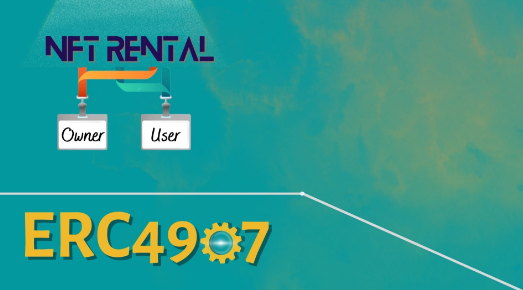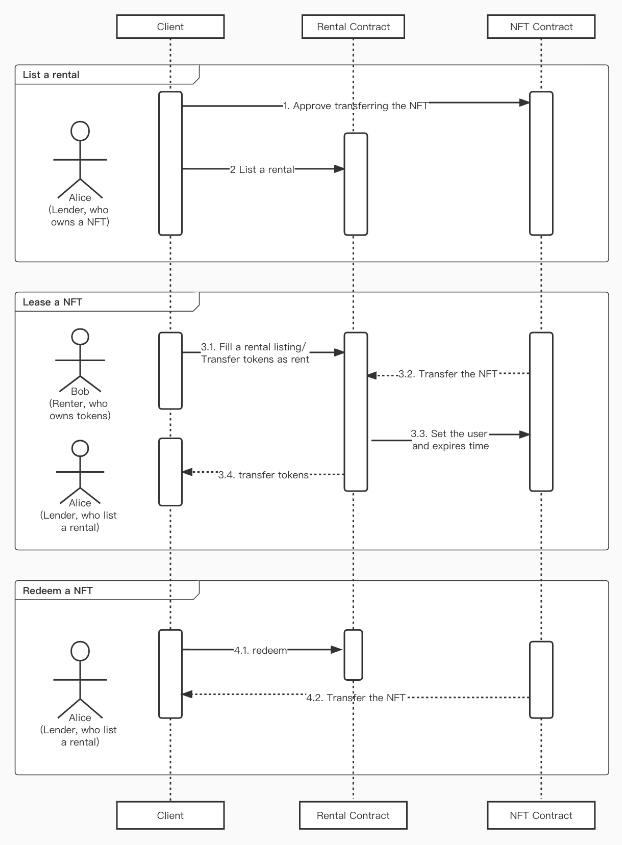NFTs today are being applied in many different fields, typically the GameFi field. As the demand for inputs increases, NFT rentals appear as a necessity. By clearly distinguishing between ownership and usage of NFTs, the ERC 4907 standard has quickly become a popular standard in the NFT rental model. So what is ERC 4907 and how does it work? Let’s find out with the Weakhand team in this article.
What is NFT Rental?
Introducing NFT rentals
In mid-2021, we have witnessed the extremely strong growth of the Play to Earn wave, typically the game Axie Infinity or the Metaverse trend appearing at the end of 2021 with typical names such as: The Sandbox, Dentraland,… With this impressive growth, GameFi and NFTs have become even more popular in the eyes of users and investors.
In the current period, most games require players to own at least 1 NFT to participate in the game. This creates an extremely large barrier for players who want to join the game. Recognizing these difficulties, some games have launched scholarship programs where players can lend NFTs to each other to earn in-game rewards without an initial investment.

What is NFT rental
The rental model has appeared and been replicated from here, the basic idea of leasing is that the NFT owner can rent his NFT to others to receive a profit from the renter. The NFT rental model is still relatively new at the moment, but it has indeed opened up a huge potential for the GameFi industry.
Why NFT rentals are important
As the GameFi industry grows, NFTs become more important than ever. The NFT rental model is gradually solving the challenges users face when engaging in gaming.
This model includes 2 main objects: NFT holders and gamer. The NFT holder will rent his NFT to someone who wants to play the game to earn interest or share the profits earned in the game from the game player. Gamers can participate in gaming to earn rewards without having to spend a large fee to buy NFTs.
Overall, the NFT rental model has brought many benefits to both NFT owners and those wishing to participate in gaming. In addition, the NFT rental model also solves another problem: liquidity. The fact that NFTs have more uses invisibly increases the amount of liquidity for NFTs, which is still considered a painful problem that the NFT market needs to solve.
NFT rental solutions
At present, there are 2 popular methods applied in the NFT rental model: Lease with mortgage and Rent without mortgage. With collateralized rentals, users need to use some amount of collateral to be able to rent NFTs. This is an uncommon rental model because requiring an initial amount of collateral to rent an NFT does not address the need to reduce the cost of entry for players wishing to participate in the game. With the rental model without collateral, players only need to pay a small fee to have temporary ownership of the NFT for a specified period of time.
Thanks to the introduction of ERC 4907, the clear separation between the roles of owner and tenant makes leasing easier than ever. This means that privileges will automatically expire on-chain without any further action.
What is ERC 4907?
Double Protocol – an NFT rental platform introduced an innovative proposal called EIP 4907. This proposal was moderated and approved by the Ethereum development team on June 28, 2022 and became a standard. Ethereum’s 30th token standard is called ERC 4907.

What is ERC 4907
Essentially, ERC 4907 allows an NFT owner to give ownership of his NFT to a tenant for a specified period of time. The renter can use the NFT until the rental term ends, after which the NFT automatically transfers back to its owner.
How Does ERC 4907 Work?
The ERC 4907 standard is an extension of ERC 721 that introduces dual roles “Owner” and “user” at its application layer. This standard allows NFTs to be rented through functionality ‘expired’ automatically enforces user rental time limits. This innovative feature makes NFT rentals more convenient, owners no longer have to manually revoke users’ usage rights, saving them time and effort.
The operating mechanism of ERC 4907 is shown in the following chart:

Operating mechanism of ERC 4907 standard
Suppose Alice is the lessor and Bod is the tenant. The rental process includes 3 main steps as follows:
NFT listing for rent: Alice will proceed to send her NFT to a so-called contract “NFT contract” and then post rental information through a contract “rental contract”.
NFT rental: After Alice lists the NFT and rental information on the “rental contract”, Bob will choose the rental time and transfer the necessary amount to this contract. Immediately after that, the “NFT contract” will transfer the NFT to the “rental contract” and the two contracts will agree to stipulate rental information including the tenant Bob, the rental period and the “expires” feature. . After specifying the necessary information, the “rental contract” will begin transferring the rental amount to Alice quickly and safely.
NFT withdrawal: After the NFT rental period ends, the automatic “expires” feature will be enabled on the “rental contract” and Bob’s role will be automatically disabled. Then to receive her NFT back, Alice will send a “redeem” command to the “rental contract”. It’s all done automatically by the smart contract so Alice and Bod won’t have to participate in the process.
What Benefits Does ERC 4907 Bring?
ERC 4907 defines a clear role for NFTs
Between NFT owners and renters, ERC-4907 clarifies the rights and lease terms of “owners” and “users” eliminating the risk of renters not returning NFTs and enhancing security for owners Own NFTs.
On-chain time management
Now, NFT renters do not have to make a second online transaction to claim their NFT. With the “expire” function, the NFT tenant’s rights will automatically expire after the rental period. This reduces costs and encourages participation by NFT renters which improves liquidity in the NFT rental market.
Easy third-party integration
NFT owners can now lease the NFT to several users and simultaneously use the NFT on several lending platforms. Leasing uses the “user” role while mortgage uses the “owner” role of the NFT.
Make NFTs more accessible
Renting an ERC-4907 NFT does not require any collateral at all as the renter is allowed to use the NFT but cannot transfer or change its usage rights and the NFT will be automatically revoked upon expiration . This opens up more opportunities for users to rent NFTs and use them.
Increase market liquidity
As web3 and the Metaverse continue to expand and become accessible to more and more users including those who cannot afford or simply do not want to purchase in-game assets and will instead choose to rent NFTs to access their benefits. This will significantly increase the liquidity of the NFT market over time.
summary
The introduction of ERC-4907 will play an important role in building the foundation for further growth and innovation in the NFT market. However, this standard is currently still in the testing phase and will need to go through many stages of verification before being widely accepted and applied in the market.


